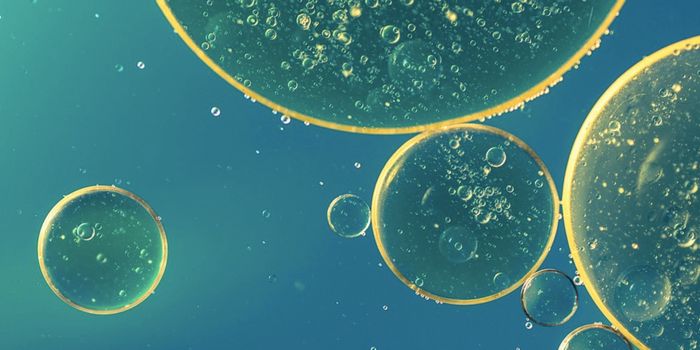Membraneless Organelles are Linked to Alzheimer's
In recent years, scientists have found that some liquids inside of cells behave like oil and vinegar do - droplets of liquid separate from the rest, creating little droplets in the cytoplasm. While researchers are still learning about their function, those liquid droplets can form and bring various molecules together, sometimes to encourage certain reactions to take place. These so-called membraneless organelles are now being investigating for their potential link to Alzheimer's and other neurodegenerative diseases. Reporting in Nature Communications, scientists identified a membraneless organelle they called a BAG2 condensate, which seems to help mop up dysfunctional proteins when cells are under stress, maintaining proper function.
The researchers are hopeful that new insights into the BAG2 condensate could lead to treatments for diseases that involved misfolded proteins, including neurodegenerative disorders like Alzheimer's disease and Parkinson's disease.
Cells can experience stress for a variety of reasons; their environment might become to saturated with glucose, the temperature may be too high or low, or the cell might be dehydrated, for example. Stress granules are membraneless organelles that gather up RNA molecules that are floating around and would normally be used by the cellular machinery to make proteins. Instead, in those stressful situations, protein production is paused while the cell recovers.
"If your cell is under stress, you want to shut down making proteins so you can really conserve your energy and get past the stress," explained Dr. Kenneth S. Kosik of the University of California Santa Barbara.
There are still many other proteins in the cell though, and Kosik added that they can become damaged or potentially misfolded.
The BAG2 condensate carries the BAG2 protein, and it can collect faulty proteins that are in the cell and direct them to a protein complex known as the proteasome. Faulty proteins are sent into the proteasome, inactivated, and broken down. While there may be a number of proteosomes in the cell, noted Kosik, this one is unique because it can take on proteins that are already misfolded, and would not be able to fit into other proteasome complexes.
"The limiting cap present on many proteasomes is not there in the BAG2 condensates," Kosik explained. Many proteins that are identified as faulty are tagged with a marker called ubiquitin, which sends them for degradation. But BAG2 does not need a ubiquitin tag.
While more research is needed to fully understand how the BAG2 protein is involved in the action, Kosik suggested that it might organize messy proteins before they're sent to the proteasome.
When it comes to the misfolded tau proteins that are considered a hallmark of Alzheimer's disease, BAG2 condensates appear to move to damaged tau and "... gobble it up," Kosik said. "The BAG2 condensate really is an ideal place for damaged tau. It would be really nice to figure out how we can shuttle tau into this condensate at the early stages of its damage for the cell to get rid of it, before it gets worse."
Sources: University of California - Santa Barbara, Nature Communications









